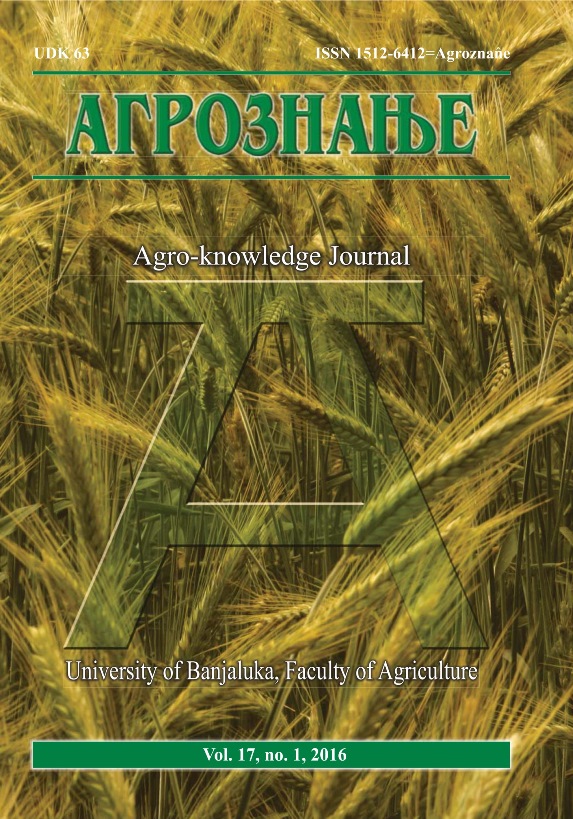Ovulation Rate in Gilts Treated with Different Hormone Protocols
DOI:
https://doi.org/10.7251/AGREN1601029SAbstract
In this study different hormonal protocols were used, in order to determine their effectiveness in ovulation value rated postmortem by the inspection of the ovaries of treated gilts. The total of 48 prepubertal Swedish Landrace gilts were used in the study, aged 150 to 160 days, 30 sexually mature gilts, aged 180 to 210 days, with a pre-established one spontaneous estrus (first pubertal), 30 gilts aged 210 to 240 days, with a determined two spontaneous (first and second pubertal) estrus, and 40 long-term anestric gilts, aged 280 to 290 days. The following hormone protocols were conducted: 400 I.U. eCG - one-time; 750 I.U. ECG - one time; 1000 IU eCG- one-time; 1500 IU eCG- one-time; 250 ηg PGF2α- one time; 20 mg Altrenogest and the combination of 20 mg Altrenogest and 1,000 I.U. eCG at the end of treatment with altrenogest. An overview of the reproductive organs of slaughtered gilts was carried out in the Laboratory for Reproduction of Domestic Animals at the Faculty of Agriculture, Novi Sad. It was found that the ovulation value of the treated gilts depends primarily on the dose of ECG and reproductive status of gilts at the moment of initiation of hormone treatment.

